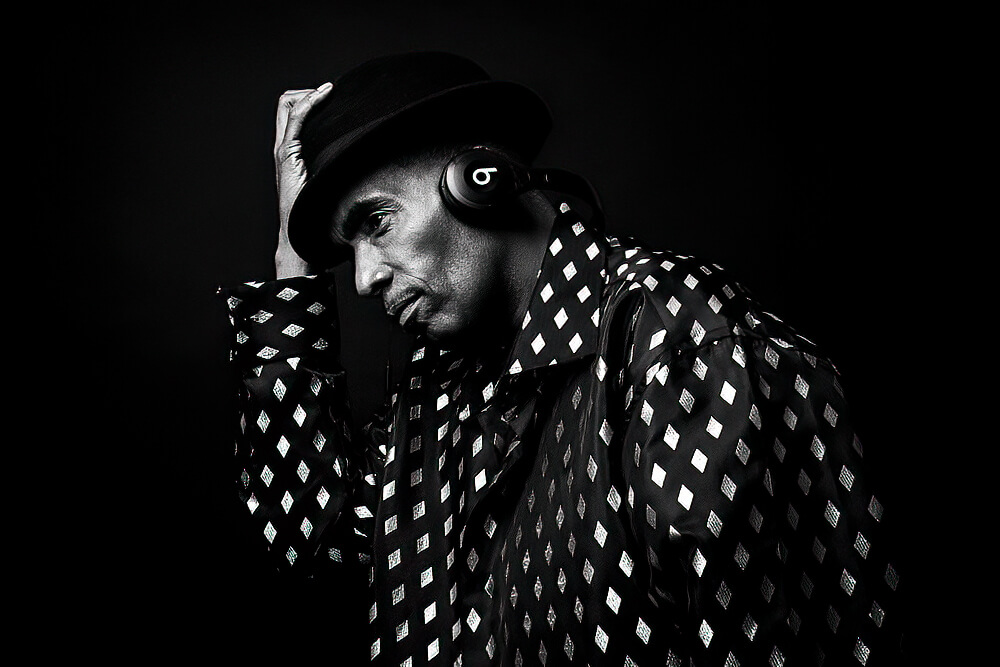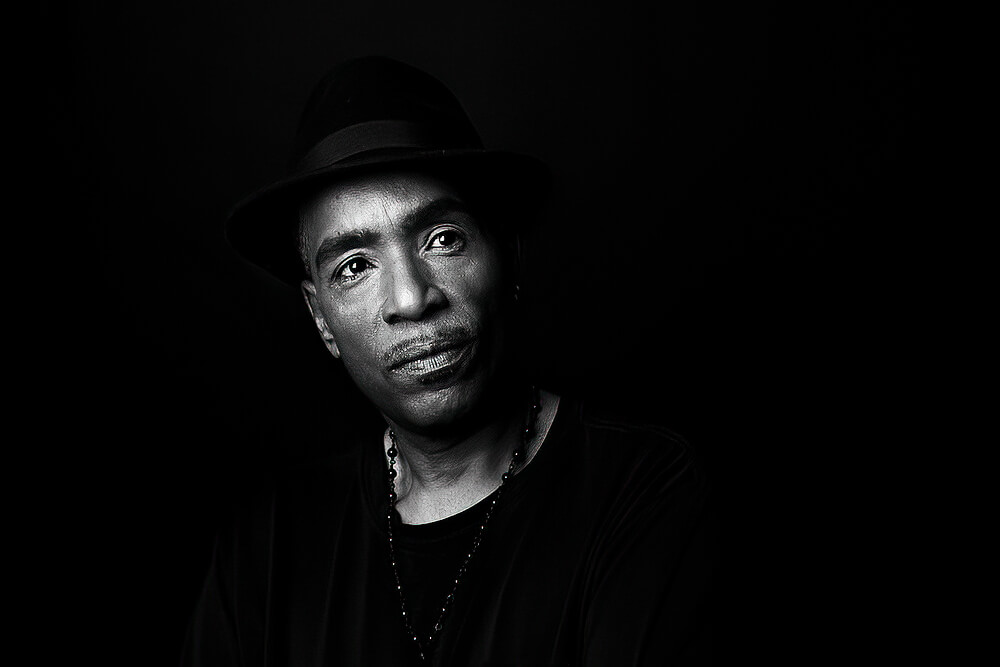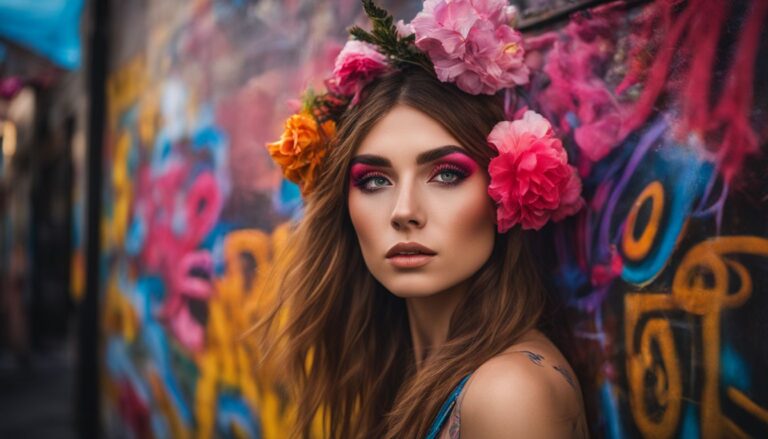The Magic Of Monochrome: Black And White Portraits That Speak Volumes
In the bustling world of imagery, it’s easy to find oneself adrift amidst a kaleidoscope of hues. You might discern that your photographs lack depth or fail to capture those raw emotions you’re keen to portray.
We understand this predicament all too well—it can be pretty disheartening when your snapshots don’t mirror the profound impact you had in mind. We made An enlightening discovery that black and white portraits are not merely about eschewing colour; they involve peeling back layers to reveal the essence, allowing us to perceive subjects in an entirely new light.
Our exploration of monochrome photography uncovered its distinctive capabilities, from deepening emotional connections to crafting timeless treasures that ensnare both eyes and hearts.
This blog aims to guide you through mastering the enchantment of this art form with hands-on advice on leveraging contrast, experimenting with light and shadow, and injecting vibrancy into each frame without relying on a spectrum of colours.
The magic, as it turns out, resides in simplicity itself.
This journey has opened our eyes more comprehensively than ever, teaching us lessons about portrait photography and life’s complexities, an awareness that sometimes less truly is more.
Key Takeaways
- Black and white portraits capture deep emotions by focusing on contrasts and removing colour distractions.
- Mastering contrast with light and shadow creates dramatic effects in monochrome photography.
- Monochrome photos highlight textures, shapes, and the essence of subjects for timeless beauty.
- Abstract art in black and white offers new ways to explore creativity without relying on colours.
- Black and white imagery leaves a lasting impact, encouraging viewers to see beyond the surface.
The Power of Black and White Portraits

Black and white portraits stir deep emotions, transcending time with their timeless allure. They skillfully capture the viewer’s attention through striking contrasts and evoke a sense of introspection.
Emotive appeal
Emotions play a significant role in black and white portraits. They help create a strong connection between the viewer and the subject. This type of photography strips away distractions like vibrant colours, allowing us to see deeper into the person’s feelings and thoughts.
Our journey through photography has shown us how monochrome images can evoke robust emotional responses.
We ensure each portrait tells its story by focusing on light, shadow, and all the tones in between. Tools like contrast adjustment help us highlight the drama of human expressions more intensely than colour photographs ever could.
Capturing fleeting moments requires technical skill and an empathetic eye for detail. Our lenses carefully explore every curve and contour to convey genuine emotions that speak volumes without saying a word.
Timeless beauty
Black and white photography carries a timeless allure that never fades. This absence of colour focuses our attention on textures, shapes, and the emotions conveyed by the subjects.
It strips away the distractions, allowing us to see the soul of each photograph. Our journey in this art form shows us how black-and-white portraits transcend time, making every shot an eternal masterpiece.
Each monochrome photo tells its own story with elegance and depth. By removing colours, we highlight life’s intricate details—from the deep shadows in a person’s face to the glowing highlights in their eyes.
These images invite viewers into a world where every wrinkle has significance, and every gaze holds a story, proving that sometimes simplicity is sophistication at its best.
Captivating the viewer’s eye
We use potent images to grab the viewer’s attention. Our journey in photography has shown us that monochrome images do this very well. We focus on light, shapes, and textures without the distraction of colours.
This makes our photos stand out. We often play with shadows and highlights to add depth and create a striking scene.
We also find negative space necessary. It leads the eye through the photo, making sure nothing gets missed. By doing this, we craft portraits that are seen but felt deeply by those who look at them.
Every click of our camera is a step towards mastering the art of capturing an audience with just shades of black and white.
Mastering the Art of Contrast

Mastering the Art of Contrast is essential for creating captivating black and white portraits. It involves harnessing light and shadow to produce striking dramatic effects, unleashing the power of monochrome photography.
Harnessing light and shadow
In our journey through photography, we’ve found that playing with light and shadow creates magic. These elements are keys to unlocking the beauty of black-and-white imagery. Here’s how we do it:
- Choose the right time of day. The golden hours, just after sunrise or before sunset, offer soft, diffused light, highlighting textures and shapes in a scene.
- Look for contrast. We seek out scenes where the difference between light and dark is stark. This contrast draws in the viewer’s eye and emphasises the main subject.
- Use negative space wisely. By focusing on areas where light fades into darkness, we craft images that lead the viewer’s imagination beyond what’s visible.
- Play with silhouettes. Placing subjects against a bright background lets us create simple yet powerful silhouette shots.
- Experiment with different lighting setups. Whether natural sunlight streaming through a window or artificial lights in a studio, changing your light sources can dramatically alter an image’s mood.
- Pay attention to mid-tones. These tones add depth and complexity to our compositions, making them more engaging.
- Post-processing techniques also play a crucial role. Tools like Skylum allow us to adjust luminosity and enhance light and shadow after capturing an image.
- Finally, practice makes perfect. We’ve spent countless hours experimenting with these techniques to refine our style.
Each photograph we take invites viewers into a world of elegance and simplicity, proving that the absence of colour can breathe life into our canvas.
Now, let’s move on to creating striking dramatic contrasts.
Creating striking dramatic contrasts

After mastering light and shadow, we move to the core of our art: creating striking dramatic contrasts. This step elevates our black-and-white portraits from simple photographs to monochrome masterpieces. Let’s explore how we achieve this.
- Pay close attention to lighting:
- Use natural or studio lights to cast deep shadows and bright highlights across your subject. This technique brings depth and a three-dimensional feel to flat images.
- Focus on texture:
- Aim your lens at subjects with intricate textures. The absence of colour makes these details pop, adding a layer of interest and drawing the viewer’s eye.
- Experiment with negative space:
- Leave large areas of your photo empty to highlight the parts that are not. This contrast makes your central subject stand out even more.
- Adjust tonal values in editing software:
- During editing, play with the lightness and darkness in different parts of your image. Tools like Adobe Photoshop make it easy to create these effects.
- Choose subjects wisely:
- Look for scenes or objects that naturally have high contrast in real life. Dark backgrounds make lighter subjects jump off the page, and vice versa.
- Embrace shadows:
- Don’t hesitate to let some parts of your image fall into complete darkness. These shadows can create mystery and moodiness in your work.
- Capture a range of emotions:
- Black-and-white photography is perfect for showcasing deep, raw emotions without distraction from colours.
Each step enables us as photographers to delve deeper into our craft, showcasing elegance, subtlety, and drama without relying on colour’s allure.
Unleashing the power of monochrome
We turn to light and dark contrast, shapes, and textures to unleash the magic of monochrome in our creations. This focus lets us explore different perspectives on luminosity. We prioritise these elements with our brushes and photo editing tools to create images that grab viewers’ attention.
Our journey into black and white artistry doesn’t ignore colours but instead goes beyond them to magnify emotions and patterns.
Our use of negative space becomes a bold statement in itself. It isn’t just an empty area but a vital part of our composition that enhances the subject’s prominence. We find freedom in this approach, allowing ourselves to experiment and express more profound thoughts through abstract art forms.
This process transforms our artwork from simple pictures into emotional experiences that leave an impression on those who see them.
The Allure of Black and White Portraits

Black and white portraits convey elegance and depth, offering a chance for introspection. They embrace abstract art, leaving a lasting impression that elevates the art form. To explore the magic of monochrome, read more about it here.
Conveying elegance and sophistication
Monochrome portraits do more than capture faces; they bring out an air of sophistication and elegance that few other mediums can. The absence of colour focuses our eyes on the subject’s very essence, highlighting their features, gestures, and overall aesthetics in a way that coloured photos might not.
This simplicity allows monochrome images to showcase their subjects’ natural beauty and grace, making every portrait look like a timeless piece of art.
Offering introspection moments becomes seamless with black-and-white imagery. It strips away the distractions, letting viewers connect deeply with what’s portrayed. Through these visuals, we present stories filled with emotion and depth perception that resonate personally.
The magic lies in its ability to turn ordinary scenes into serene displays of luminosity and shadow play. This approach retains relevance and astonishes its beholders by revealing nuances often overlooked in vibrant palettes.
Elegance is not about being noticed, it’s about being remembered.
Offering a chance for introspection
Black and white portraits offer a unique chance for introspection. They strip away distractions, focusing on the subject’s emotions and essence. This genre of photography prompts viewers to engage in deep reflection, drawing them into the intricate interplay of light and shadow and encouraging an exploration of the subject’s inner world.
Shooting in black and white allows photographers to capture raw emotion with striking simplicity, leaving a lasting impression on those contemplating these luminous monochromatic images.
The appeal lies in capturing physical features and diving into the depths of human expression, conveying powerful emotions that resonate beyond superficial beauty or aesthetics.
Embracing abstract art
Exploring abstract art opens doors to boundless creativity and interpretation. The absence of recognizable imagery invites viewers to immerse themselves in the vibrant experience, inviting introspection and unleashing many emotions.
The interplay of shape, form, and texture in abstract art captivates the eye, offering endless possibilities for individualistic exploration. Delving into this realm allows us to harness our artistic freedom while leaving an indelible mark on the viewer’s psyche.
The allure of abstract art lies in its ability to transcend time and cultural barriers; it beckons us towards a deeper understanding of human perception and expression. This genre not only amplifies subtle nuances but also adds a new dimension to one’s creative repertoire, opening paths that lead to unparalleled artistic discovery.
The Impact and Versatility of Monochrome
Monochrome photography leaves a lasting impression on viewers. It amplifies subtle nuances and offers the freedom to create one’s masterpiece. The impact of black and white portraits is unparalleled, elevating the art form and captivating the viewer’s eye with timeless beauty.
The versatility of monochrome imagery is undeniable. Its ability to convey emotion, bring out depth, and amplify contrasts adds a new dimension to photography. This aesthetic choice allows photographers to explore their creativity in ways that colour often cannot match.
Leaving a lasting impression
Black and white photography has an ethereal quality that lingers in the mind long after viewing. The absence of colour allows for a profound emotional connection with the viewer, leaving a deep and lasting impact.
When delving into black and white portraits, it’s fascinating to witness how light and shadow intertwine to create powerful contrasts, further enhancing the evocative nature of these images.
As professionals seeking mastery in this art form, we can appreciate monochrome photography’s invaluable ability to captivate emotions and leave a mark that endures well beyond the initial viewing.
The world-renowned works of artists such as Daidō Moriyama and Robert Mapplethorpe provide insights into harnessing light and shadow to elevate our creations, making them unforgettable experiences for those who engage with them.
Elevating the art form
The art of black and white photography elevates through the play of light and shadows, emphasising clarity and quality. Monochrome images eliminate distractions while amplifying emotions by focusing on lighting, composition, textures, and elements within the frame.
The dramatic effect of shape, form, and pattern is heightened in black and white portraits. These aspects fully capture the viewer’s attention whilst showcasing a stronger emotional connection to the subject.
Black and white photography leaves a lasting impression by enabling photographers to harness light creatively while amplifying subtle nuances. This enhances the photographer’s skill and allows for introspection for those viewing the artwork.
Amplifying subtle nuances
Mastering the art of black and white photography opens a world of opportunities for amplifying subtle nuances within an image. By meticulously controlling light and shadow, photographers can unveil the hidden depths and delicate textures present in their subjects.
The use of negative space, combined with expertly positioned leading lines, further enhances the portrayal of emotion and meaning within each portrait.
In black and white photography, every aspect contributes to conveying a powerful story – from the precise balance of contrast to the strategic manipulation of lighting. These techniques allow professionals to craft images that resonate profoundly with viewers, evoking feelings and insights beyond what colour imagery can achieve.
The freedom to explore and create his/her masterpiece.
Explore the intriguing world of black and white photography, where you can unleash your creativity and craft unique masterpieces. Experiment with light and shadow to evoke emotions in your portraits, harnessing the power of monochrome to create timeless and captivating images that leave a lasting impression on viewers.
Embrace this versatile art form as a professional, elevating your work with high-contrast techniques and minimalist compositions that amplify subtle nuances in every frame.
Dive into black and white portraiture, where you can tailor your artistic vision to convey elegance, sophistication, and introspection through bespoke self-portraits or evocative subjects.
With the ever-evolving digital tools at your disposal, explore new dimensions in photographic expression while mastering the intricacies of contrast to add depth and impact to your creations.
Conclusion
In conclusion, black and white portraits hold a timeless allure, conveying emotions and storytelling with powerful simplicity. Mastering the art of contrast in monochrome photography unleashes striking dramatic visuals that captivate viewers’ attention.
The impact and versatility of monochrome not only leave lasting impressions but also elevate the art form to new heights. Embracing black and white photography allows professionals to explore and create masterpieces, amplifying subtle nuances in an ever-evolving world.
By harnessing light and shadow, photographers can add depth while eliminating distractions, allowing for captivating moments captured through challenging lighting situations. As we conclude our exploration into this realm of artistic expression, let’s delve deeper into the magical potential of monochrome photography, which adds an air of sophistication to the professional portfolio while evoking strong emotional connections with its audience.
FAQs
Q: What is the speciality of black and white photography?
A: Black and white photography has a timeless and classic appeal. It often highlights the subject’s raw emotions and details more vividly than colour photography.
Q: How can I enhance my black and white portraits?
A: To enhance your black and white portraits, focus on capturing a wide range of tones from deep blacks to bright whites, paying attention to lighting, shadows, and textures.
Q: Is black and white photography still relevant in the digital age?
A: Absolutely! Black and white photography continues to be popular among photographers, offering a unique and artistic perspective that stands out in a world filled with colourful digital imagery.
Q: What are some tips for creating stunning black and white portraits?
A: Experiment with lighting techniques, angles, and compositions to create visually striking black and white portraits that convey emotion and depth.
Q: Do I need special equipment to capture black and white portraits?
A: While specialized equipment like black and white film cameras can enhance the authenticity of your work, you can also achieve stunning black and white portraits using digital cameras or by converting color photos into black and white during post-processing.
Q: Can anyone learn how to master black and white photography?
A: Yes, whether you’re a seasoned photographer or a beginner, mastering black and white photography is a skill that can be developed through practice, experimentation, and a keen eye for detail.
Q: What is the role of mid-tones in black and white photography?
A: Mid-tones play a crucial role in black and white photography as they help to add depth, dimension, and richness to your images by filling the gap between the darkest blacks and the brightest whites.








